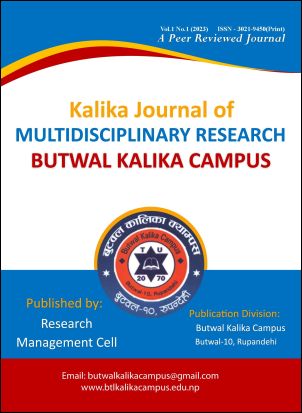A Study on the Perception of Visually Impaired Student in Inclusive Education: The Case of Sahil
DOI:
https://doi.org/10.3126/kjmr.v1i1.61497Keywords:
Challenges, inclusive education, Nepal, visual impairmentAbstract
Obstacles still exist in Nepali public and private higher education system, despite ample efforts undertaken to guarantee the successful implementation of inclusive education. The existing study highlights a single participant, Sahil, a visually impaired university student, encountering opportunities and obstacles in college life. The investigation was performed using a case study approach, and to fully understand Sahil's perspectives, the researcher interacted extensively with the subject's academic and university experiences. Participant’s remaining time on campus and in class was closely and continuously scrutinized for five years (2017-2022). The field notes taken during observation and the interview transcripts were afterwards submitted for content analysis. The results show that while there are some opportunities for supportive comprehensive instruction, these do not guarantee that visually impaired graduates will obtain complete and satisfying instruction. The main obstacles to implementing inclusive education have been identified as inadequate funding, a lack of resource provisions, a shortage of trained specialists and fewer opportunities for professional progress. To ensure the successful implementation, it was recommended that educators, administrators, stakeholders, non-governmental organizations and responsible entities collaborate, provide profession-specific training and adequate financial assistance.




